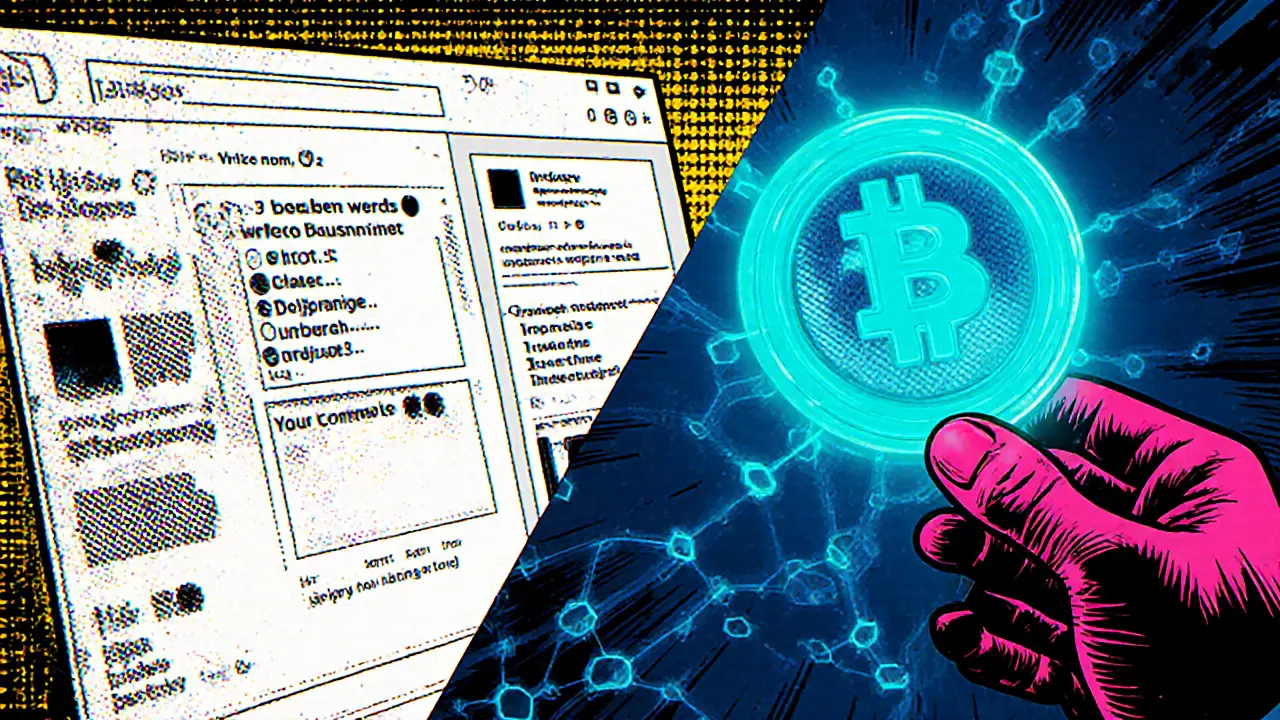Web3 Content Ownership: How Social Media is Changing
Explore how Web3 social media lets creators truly own their posts, earn royalties, and keep data sovereign-plus a step-by-step guide to getting started.
Read MoreWhen you dive into decentralized social media, a class of platforms built on blockchain that let users own their data and earn tokens for content. Also called Web3 social networks, it relies heavily on self‑sovereign identity to let users control who sees their profile, and on modular blockchain solutions like Celestia for scalable data availability. Meanwhile, token incentives reward creators directly, reshaping how value flows online.
Self‑sovereign identity (SSI) is the backbone of privacy on these platforms. Instead of a central company holding your login credentials, SSI lets you store a cryptographic passport in a personal wallet. You decide which apps can read your name, reputation score, or follower list, and you can revoke access at any time. This model cuts the data‑harvesting middleman and gives creators a trustworthy way to prove authenticity without handing over personal details.
Scalability is another challenge that modular blockchains solve. Traditional monolithic chains struggle to store massive amounts of social data—posts, likes, video streams—without slowing down. By separating transaction ordering from data availability, projects like Celestia let developers plug in their own execution layers while still benefitting from fast, secure data sampling. The result is a network that can handle millions of interactions per second, keeping feed refresh rates snappy and fees low.
Token incentives turn every like, comment, or share into a measurable economic action. Creators earn native tokens for engagement, while curators and moderators can stake tokens to signal quality. This creates a merit‑based economy where value follows actual contribution, not just ad impressions. Because the reward rules are coded into smart contracts, they’re transparent and can’t be changed overnight by a single admin.
Content moderation on decentralized platforms takes a different route. Instead of a central team deciding what stays up, communities vote on policy proposals using blockchain voting mechanisms. These votes are recorded immutably, and the outcome can trigger automatic smart‑contract actions—like flagging or demoting harmful posts. While the process can be slower than a single‑click delete, it ensures that the rules reflect the collective will of the users rather than a hidden corporate agenda.
Finally, seamless wallet integration lowers the barrier for new users. Modern mobile wallets now support social logins, enabling a one‑tap connection to your decentralized profile. Once linked, you can tip, mint NFTs, or join governance votes without ever leaving the app. As these tools become more user‑friendly, the gap between traditional social media and its decentralized counterpart shrinks, inviting mainstream creators to experiment with new revenue streams. All these pieces—SSI, modular blockchains, token incentives, community voting, and easy wallet access—set the stage for the articles below. Below you’ll find deep dives, practical guides, and real‑world examples that show how decentralized social media is reshaping online interaction today.

Explore how Web3 social media lets creators truly own their posts, earn royalties, and keep data sovereign-plus a step-by-step guide to getting started.
Read More